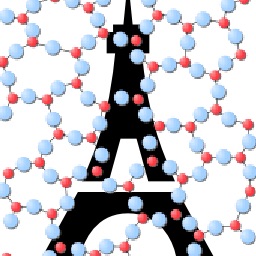Mesoscale texture of cement hydrates
Strength and other mechanical properties of cement and concrete rely upon the formation of calcium–silicate–hydrates (C–S–H) during cement hydration. Controlling structure and properties of the C–S–H phase is a challenge, due to the complexity of this hydration product and of the mechanisms that drive its precipitation from the ionic solution upon dissolution of cement grains in water. Departing from traditional models mostly focused on length scales above the micrometer, recent research addressed the molecular structure of C–S–H. However, small-angle neutron scattering, electron-microscopy imaging, and nanoindentation experiments suggest that its mesoscale organization, extending over hundreds of nanometers, may be more important. Here we unveil the C–S–H mesoscale texture, a crucial step to connect the fundamental scales to the macroscale of engineering properties. We use simulations that combine information of the nanoscale building units of C–S–H and their effective interactions, obtained from atomistic simulations and experiments, into a statistical physics framework for aggregating nanoparticles. We compute small-angle scattering intensities, pore size distributions, specific surface area, local densities, indentation modulus, and hardness of the material, providing quantitative understanding of different experimental investigations. Our results provide insight into how the heterogeneities developed during the early stages of hydration persist in the structure of C–S–H and impact the mechanical performance of the hardened cement paste. Unraveling such links in cement hydrates can be groundbreaking and controlling them can be the key to smarter mix designs of cementitious materials.
